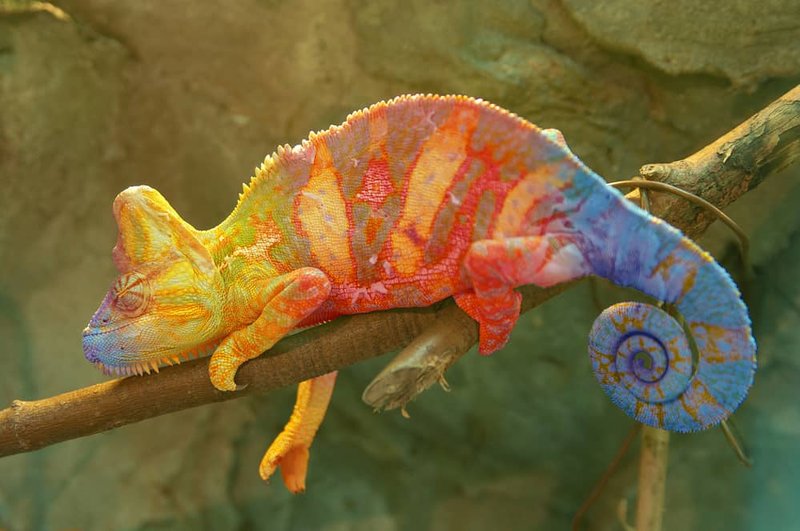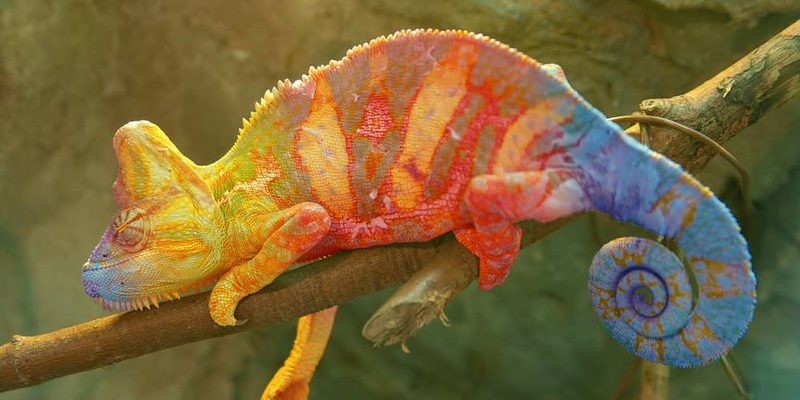
While many reptiles, like certain species of lizards, have the power to regrow their tails, the story with the Parson’s chameleon is a little different. Let’s dive into the fascinating world of these creatures and uncover the truth about their regenerative abilities. Trust me; it’s a journey worth taking!
Understanding the Parson’s Chameleon
The Parson’s chameleon, or *Calumma parsonii*, is one of the largest chameleons out there, native to Madagascar. With its striking green and sky-blue hues, it’s hard not to be mesmerized by this unique reptile. Just picture it perched on a branch, eyes rotating independently, scanning for food and potential threats. But why should you care about this particular chameleon?
Well, these chameleons aren’t just about looks. They play a vital role in their ecosystem, helping to control insect populations. In a way, they’re like the tiny guardians of Madagascar’s forests. Plus, studying them gives scientists insights into evolutionary biology and adaptation. So, the next time you see a Parson’s chameleon, remember there’s a lot more going on beneath that colorful surface!
The Basics of Limb and Tail Regeneration
You might be wondering, what does it mean to regenerate limbs or tails? In the animal kingdom, certain species have a remarkable ability to regrow parts of their bodies after losing them. This process is known as regeneration, and it primarily occurs in younger animals and some adult species. For instance, many lizards can lose their tails to escape predators and regrow them later.
This ability to regenerate is fascinating because it involves complex biological processes, including stem cell activation and tissue growth. So, can the Parson’s chameleon tap into this superpower? Here’s the scoop: while they can lose their tails, they don’t have the same regenerative abilities as some lizards.
Can the Parson’s Chameleon Regrow Its Tail?
Let’s get straight to the point: the Parson’s chameleon does not have the ability to regrow its tail. Unlike some reptiles, when a Parson’s chameleon loses its tail, that’s pretty much the end of the line. This is primarily due to the biological structure of their tails, which play specific roles in balance and movement.
Without a tail, these chameleons can face challenges, especially in terms of mobility. Their tails help them navigate the treetops of their forest habitat. Without it, they may struggle to climb or navigate their environment effectively.
What About Limbs—Can They Regrow Those?
Now, let’s talk about limbs. Similar to their tails, Parson’s chameleons cannot regenerate limbs either. Losing a limb can be a significant setback for these creatures. Their legs are crucial for climbing, hunting, and escaping predators. Imagine losing your arm and trying to navigate everyday tasks—it would be quite a challenge!
While they possess strong limbs that allow them to grip onto branches tightly, losing one can severely impact their lifestyle and ability to thrive in the wild. It’s a tough reality for these beautiful creatures—but that doesn’t mean they don’t have other survival strategies.
Comparing Regeneration in Other Species
If you’re curious, let’s look at some other species known for their regenerative powers. Lizards, as mentioned, are famous for their ability to regrow tails. Some species, like the axolotl (a type of salamander), can regrow limbs and even parts of their heart and brain! It’s incredible to see how different species evolve various survival mechanisms.
Comparatively, the Parson’s chameleon has adapted in other ways, such as its color-changing abilities, which help it camouflage and avoid predators. While they might not regenerate, they’ve got tricks up their sleeve that help them thrive in their unique environment.
Why Do Some Animals Regrow Parts While Others Don’t?
This brings us to an interesting question: why can some animals regenerate while others cannot? It often comes down to evolutionary advantages. Animals that can regrow limbs or tails may have greater chances of survival after injuries, allowing them to escape predators or recover from accidents.
For creatures like the Parson’s chameleon, it seems that their evolutionary path favored other survival strategies. Instead of focusing on regeneration, they’ve developed excellent camouflage and the ability to blend into their environments. This way, they stay safe from predators while continuing to play their vital role in nature.
The Importance of Conservation
Now that we know the Parson’s chameleon can’t regenerate, we should also consider their future. Habitat loss and environmental changes are significant threats to these beautiful reptiles. Conserving their natural habitats and raising awareness about their ecological importance is essential.
As these chameleons face challenges in the wild, protecting them becomes critical not just for their survival, but also for the health of Madagascar’s ecosystem. Every creature has its role to play, and losing one can disrupt the delicate balance of nature.
So, to wrap it all up, the Parson’s chameleon doesn’t have the ability to regrow its tail or limbs. While that’s a bit disappointing for fans of regeneration, these creatures have adapted in other fascinating ways. From their stunning colors to their camouflage skills, they truly are remarkable reptiles.
Understanding more about their biology and conservation needs not only helps us appreciate them better but also reminds us of the complex web of life we’re all a part of. Next time you see a Parson’s chameleon, take a moment to admire its beauty and think about the vital role it plays in its home!

